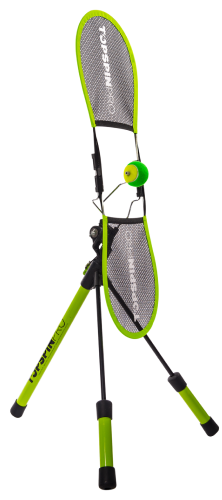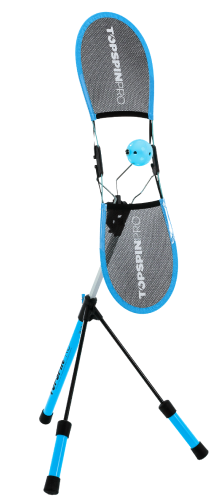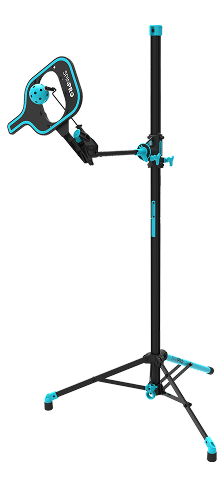 Credit: pixabay.com
Credit: pixabay.com
What we'll cover in this article:
Stay in the loop!
Want to be updated when we publish? Be sure to sign up for our newsletter. No spam, we promise!
12 Tennis Rules
Rally Net Cords
If you hit a rally ball that touches the net cord and drops over then we know that it counts and your opponent must try to play it back. But what happens if it hits the net posts, net cord, net strap or singles sticks and then bounces in? That still counts too! If the ball hits any of those areas and bounces back into the correct court area then it is considered a "good" return . Here’s one of the wildest net cords ever from Kim Clijsters:
Touching The Net
This is one of the 12 tennis rules that occurs most often. Both the player and racket are not allowed to touch the net or cross over the net. With a couple of exceptions: The follow-through of a shot may cross the net as long as the contact with the ball was made before the net and on the correct side of the court. If the ball has spun back to your opponent's side after they struck it then you may also reach across (see below).
Back Bounce
This is probably the most common rule that I see people disagree about. If you hit the ball with backspin and it lands on your opponent's court and then bounces back over to your side of the net then it is your point. The only way your opponent can win the point is if they reach over the net once it has spun back and knock it in the net. As stated above this is one of the only scenarios your racket is allowed to go over the net. See the video below for some wild backbounce shots:
On The Line
When the ball is traveling at speed it’s often hard to see if it's in or out. But do you know the official rule? If any part of a ball touches a line, the ball is good. A ball 99% out is still 100% good. A player shall not call a ball out unless the player clearly sees space between where the ball hits and a line, so in other words if you can't call it out it's "in". I see a lot of people wasting valuable time that they could be playing arguing over lines. To avoid arguments just replay the point or if it's practice you can even continue play on rally balls or serves that are close to extend the points for extra practice.
Underhand Serve
Although sometimes frustrating and seen as unsportsmanlike, the rules allow for underhand serving in tennis. It doesn't matter if the ball is released in an upward or downward motion, as long as it doesn't bounce you can hit it any way you like! Here's some great underarm serves from the 2020 season:
Foot Fault
No part of your foot or shoe must make contact with the baseline or inside court before the ball is struck. The rule also applies to your positioning. You must stand between the center mark and the outside line of the relevant court you are playing (singles or doubles). If you go past either of these lines it is also a foot fault. It’s common to see players serving with a least one foot past the doubles side line (officially a foot fault) when they are trying for an extreme angle. Watch out for that next time you play!
Double Hit
A player cannot intentionally hit a ball twice in one shot. But if the ball, in the course of a single, continuous movement of the racket comes into contact with the strings more than once, it is allowed. It is also your call to make and not your opponent's.
Around The Net
Usually, we aim to hit the ball over the net and in the court. However, if you get a ball out wide that you can hit back in and around the post then this is also allowed. The ball must however land inside the opponent's court. Here's some of the best around the net shots:
Whiffing The Ball
Whiffing the ball during a rally is obviously considered a fault and you lose the point. This also counts on the serve which many players are unaware of. If the server swings forward and completely misses the ball, it is deemed as a fault. You don't get to try again, unless you have a second serve. You can however redo the ball toss as many times as you like as long as you don't swing forward to try and hit.
Throwing The Racket To Reach A Ball
This is one we see fairly often but most players aren't aware of the rule. The racket must be in contact with the player for a shot to count. So if the ball is excessively high or far away and you toss you racket to reach it, it may be spectacular if it goes in, but unfortunately it doesn't count!
Service Lets
The most I've ever seen hit in a row in a match that I've played in is 3. You can however hit an unlimited amount of lets until you either get the ball in or miss. In some leagues and college tennis the let is played and you don't get to retake it. Here's when Serena Williams hit 4 lets in a row:
What Happens After A Tiebreak?
This one causes a lot of confusion. Who serves and from where? Thinking of the tiebreak as the 13th game will help. The person who serves the first point receives serve in the first game of the next set. And you always switch ends at the end of the tiebreak.
TOPSPINPRO BEGINNER COURSES
We use the latest neuroscience in our TopspinPro Online Courses. Check them out for some in depth help with developing your shots:
In Summary
Knowing these 12 tennis rules properly can not only get you out of a sticky situation but can also be fun for your friends when you can drop a little tennis trivia. You also don't want to let an opponent take advantage because you are a little unsure of the situation and give them an important point. Check out the official IFT Rules page to see all the rules in more detail.
Let us know in the comments below if you didn't know any of these 12 tennis rules or if there are any important ones we missed!
FAQs
-
What happens if a rally ball hits the net cord and drops over?
If a rally ball touches the net cord and drops over, it counts as a valid shot, and your opponent must try to play it back. This rule also applies if the ball hits the net posts, net cord, net strap, or singles sticks and then bounces in.
-
Can a player or their racket touch the net during a point?
No, neither the player nor their racket can touch the net or cross over it during a point. However, the follow-through of a shot may cross the net as long as the contact with the ball was made on the correct side of the court.
-
Is an underhand serve allowed in tennis?
Yes, underhand serves are allowed in tennis. As long as the ball is hit before it bounces and it follows the other serving rules, it is considered a legal serve.
-
What is considered a foot fault in tennis?
A foot fault occurs if any part of your foot or shoe touches the baseline or inside the court before the ball is struck. The rule also applies to your positioning; you must stand between the center mark and the outside line of the relevant court you are playing on.
-
What happens if a player swings and misses the ball on a serve?
If a player swings and completely misses the ball on a serve, it is considered a fault. The player does not get to try again unless they have a second serve available. However, they can redo the ball toss as long as they don’t swing forward.
Links Related to This Article
Enjoyed this article?
Be sure to sign up for our newsletter and we'll keep you up to date about new posts



7 comments
If you are not sure a ball is out, then it is in, and you do NOT ever replay a point because you weren’t sure if a ball was in or not!
interesting…. had no idea you could reach over the net!
Another one is “travelling “ you must start and finish the serve in roughly the same place
I was just about to comment on line calls but Stephen Mazak beat me to it and got it spot on!
On Net Cords, if a serve hits a net post or singles sticks and then bounces in, it’s a fault (as it couldn’t possibly have been going in).
On Foot Fault, the foot can be in line with the sideline but not the centre mark. This is made harder to call by the rules of tennis using the “imaginary extensions” of lines.
In doubles, if you call the ball out & your partner calls it in, it is an automatic win for your opponents. No do overs allowed here!
Whiffing in rally during the match fine i thought…seen Gael pretend something and do something else. Also more so in doubles..if front player misses but doest touch, baseline player can still return right..?
Hi Arin, yes you can whiff the ball as long as you can scramble back and hit it. You only lose the point if you whiff it and it goes past you. And as long as you don’t make contact in doubles your partner can then retrieve it for you!